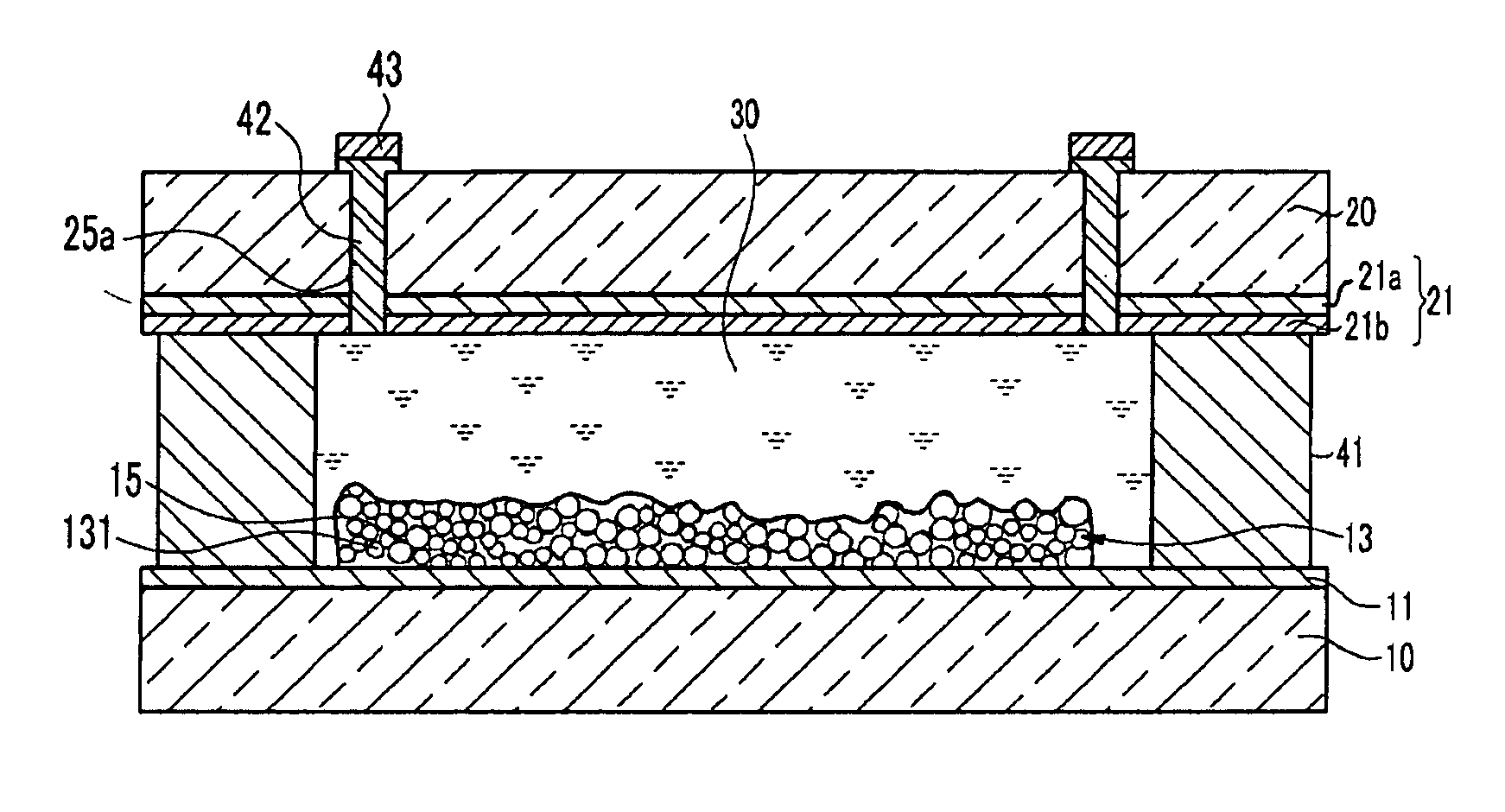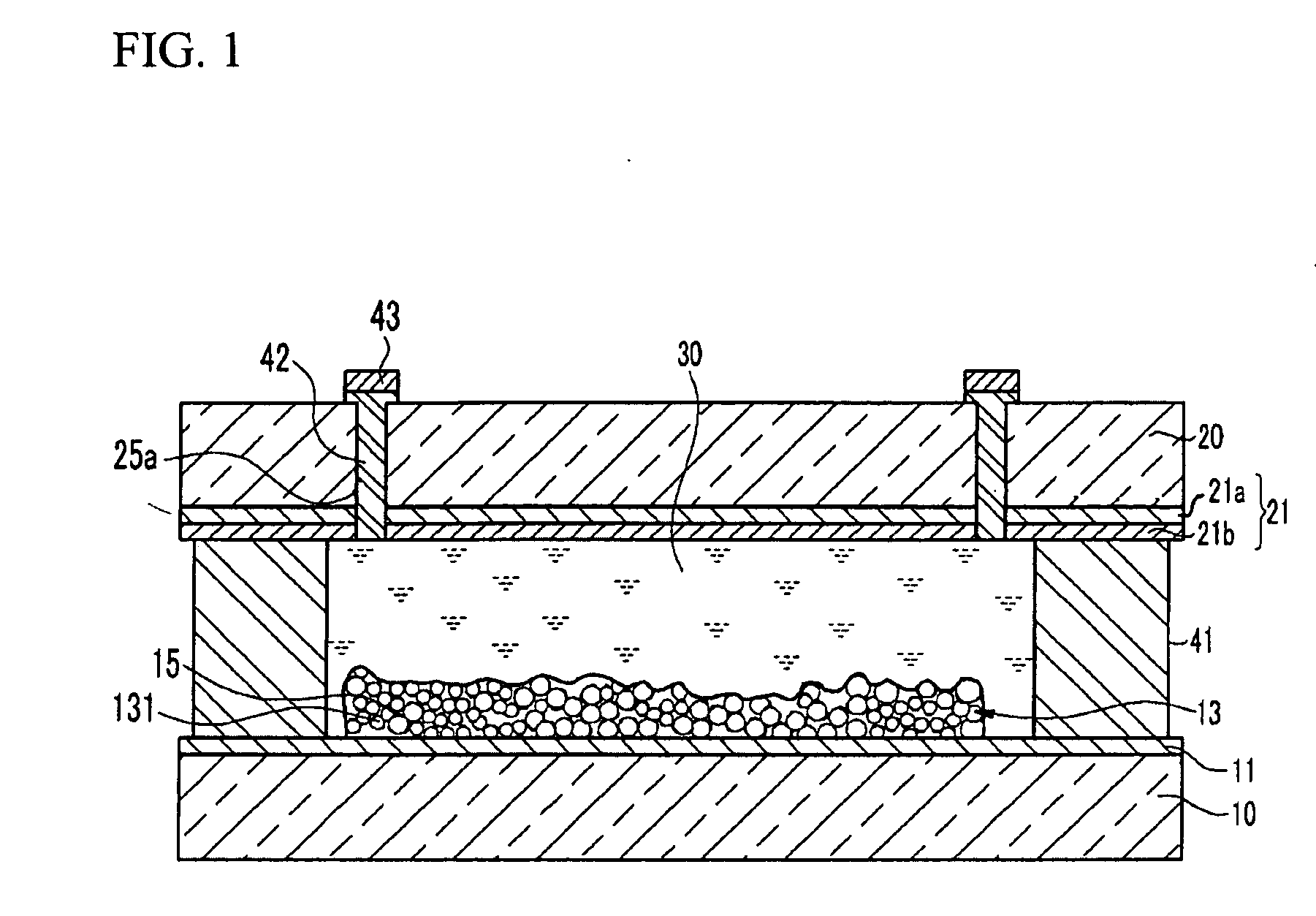Solar cell and manufacturing method thereof
a technology of solar cells and manufacturing methods, applied in the field of solar cells, can solve the problems of low photoelectric conversion efficiency of solar cells, limited research on the field of new dye development, and insufficient use of solar cells, so as to improve the diffusivity and viscosity of paste, enhance the porosity of additional porous film 53, and improve the contact characteristic of interfaces
- Summary
- Abstract
- Description
- Claims
- Application Information
AI Technical Summary
Benefits of technology
Problems solved by technology
Method used
Image
Examples
example 1
[0077] A first electrode was formed of tin oxide on a first 1 cm×1 cm glass substrate, such that the first electrode had a surface resistivity of 10 Ω.
[0078] A self-assembling composition was prepared by adding a block copolymer of P123 (BASF) (15 wt. %) and a TiO2 precursor of Ti 4-isopropoxide (TTIP) (21 wt. %) to a solvent of acetyl acetone (64 wt. %) to thereby form a self-assembling compound. The self-assembling composition was coated on the first electrode through dip coating with a speed of 5 mm / min. The coated composition was aged at ambient temperature for one hour, and heat-treated at 450° C. for 30 minutes during the firing process, thereby forming a TiO2-containing porous film. The thickness of the porous film was 150 nm.
[0079] A solution in which TiO2 particles with a mean particle diameter of 15 nm were diffused was coated onto the porous film through doctor blade method, thereby forming an additional TiO2-containing porous film.
[0080] The first substrate with the f...
example 2
[0090] A solar cell was manufactured in the same way as in Example 1 except that in the formation of the porous film, the self-assembling compound was prepared by adding 4.5 wt. % of P123 and 6.3 wt. % of titanium 4-isopropoxide to 89.2 wt. % of acetyl acetone, and heat-treated at 350° C. during the firing process.
example 3
[0091] A solar cell was manufactured in the same way as in Example 2 except that in the formation of the porous film, the firing process was carried out at 400° C.
PUM
| Property | Measurement | Unit |
|---|---|---|
| temperature | aaaaa | aaaaa |
| temperature | aaaaa | aaaaa |
| mean particle diameter | aaaaa | aaaaa |
Abstract
Description
Claims
Application Information
 Login to View More
Login to View More - R&D
- Intellectual Property
- Life Sciences
- Materials
- Tech Scout
- Unparalleled Data Quality
- Higher Quality Content
- 60% Fewer Hallucinations
Browse by: Latest US Patents, China's latest patents, Technical Efficacy Thesaurus, Application Domain, Technology Topic, Popular Technical Reports.
© 2025 PatSnap. All rights reserved.Legal|Privacy policy|Modern Slavery Act Transparency Statement|Sitemap|About US| Contact US: help@patsnap.com



